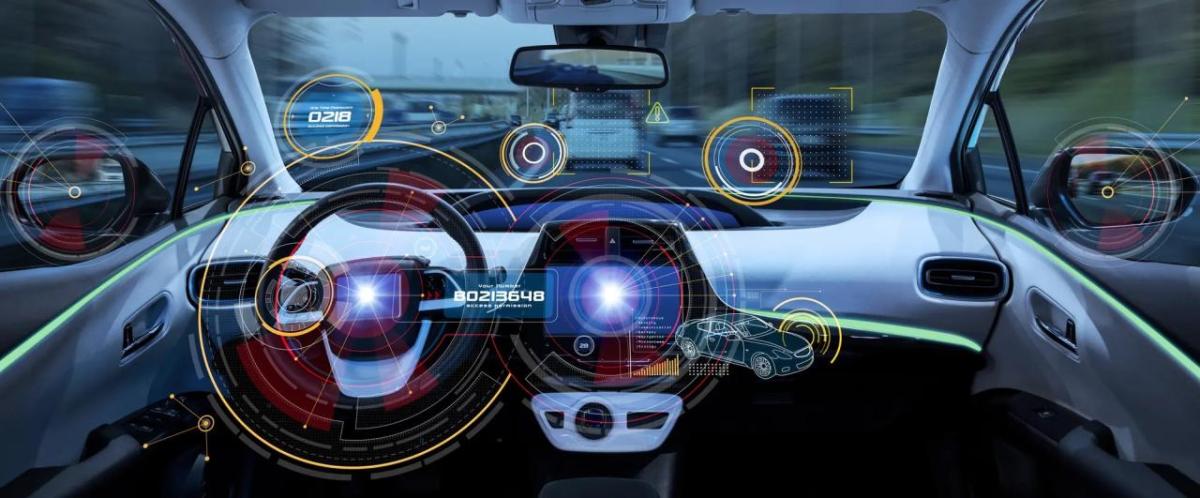Executive Predictions 2024: What’s Next for Automotive?

The auto sector has undergone a significant transformation, and the result has ushered in the era of the software-defined vehicle. Software has enabled safety, comfort, and sustainability that would have been impossible ten years ago. With the growing popularity of electric vehicles (EVs) and the emergence of autonomous vehicles (EVs), the auto sector is looking to quickly address challenges and maintain momentum in innovation.
Here are some predictions about what the auto industry will focus on in 2024.
“The Next Frontier in EVs will be prioritizing and predicting battery health,” Jeff Harris, VP Corporate and Portfolio Marketing
As EVs continue to evolve, range anxiety will start to dissipate as 300 miles becomes standard. However, attention will shift to the health of batteries (HoB). With cell phones already illustrating how batteries can deteriorate over time, no driver wants to experience a car that quickly loses power, potentially leaving them stranded or, at the very least, requiring multiple charges per day.
Battery health will become a factor influencing EV buying decisions, presenting an opportunity for auto manufacturers to visualize a car's health status to reassure and inform drivers. The information will be more granular and incorporate gamification interfaces so drivers can see how their actions influence keeping the battery management system at peak performance. Additionally, by integrating AI algorithms into the system, it will predict the health and performance under various conditions, quelling any concerns.
4 Automotive Innovation Trends Gaining Traction in 2024 from Hwee Yng Yeo, Automotive Solutions Lead
1. Cars run the world: vehicle-to-grid implementation
One of the most significant areas of investment by the public and private sectors is in distributed energy resources. In October 2023, the U.S. Department of Energy announced $3.5 billion to expand wind and solar power capacity, harden power lines against extreme weather, integrate batteries and electric vehicles (EV), and build out microgrids to keep the lights on during power outages. This is part of the $10.5 billion available to expand transmission lines, improve grid resiliency, and deploy “smart-grid” technologies.
EVs will start to become vehicle-to-grid or V2G-enabled, which turns the vehicle into a battery pack capable of bidirectional power flow able to discharge stored electricity back to the grid. However, connecting V2G-enabled EVs to the grid is extremely complex, and distributed energy resource manufacturers for EVs must comply with multiple standards and certification processes before they can go to market as V2G-compliant.
2. Solid-state EV batteries shift from concept to reality
It took solid-state drives (SSD) almost 30 years to become pervasive. However, despite work on solid-state batteries for electric vehicles starting just over a decade ago, they are now in the final stages of fine-tuning, offering automakers an array of benefits, including:
Lighter: A compact and more lightweight battery increases the driving range.
More stable: Unlike Li-ion batteries, which use liquid electrolytes, solid-state batteries use solid electrolytes, typically made of ceramics or polymers. These are more stable and secure, generating a lot less heat than their liquid counterpart.
Faster, more durable: Solid-state batteries can reach 80% charge in 15 minutes and maintain 90% of their capacity after 5,000 charges, unlike lithium-ion, which begins to degrade after 1,000 cycles.
3. Asia Pacific leads the charge
In 2024, research in solid-date batteries will intensify, with market growth led by Asia Pacific followed by Europe and America. For example, South Korea announced a $15 billion investment to commercialize solid-state batteries by 2030. And China's Guangzhou Automobile Group is pushing an even more aggressive timeline, stating it will roll out all-solid-state batteries in vehicles by 2026!
4. Closing the Gap Toward Fully Autonomous Driving
In November 2023, BMW joined Mercedes to offer SAE Level 3 conditionally autonomous driving. Drivers can legally take their hands off the steering wheel "in certain conditions" but are expected to resume control when prompted, failing which the car will guide itself to a safe stopping place.
In 2024, automakers will continue refining Level 3 self-driving capabilities to make them increasingly available in consumer vehicles. Concurrently, commercializing Level 4 self-driving will continue. However, to minimize the risks and liabilities of self-driving features, numerous iterations of design validation and testing must be done for the sensors and algorithms that are taking over from the human driver. One of the biggest challenges is training the algorithms to handle real-world traffic scenarios, from slow country roads to bustling peak-hour city traffic and one-in-a-million contingencies like a moose crossing the road.
The road ahead
As we enter 2024, EVs are outpacing internal combustion engine (ICE) vehicles for consumers’ preferred vehicles. Moreover, this trend is enabling the transportation sector to dramatically reduce emissions and contribute in profound ways towards slowing the effects of climate change. Keysight’s proven design, emulation, and test solutions are enabling auto manufacturers to address challenges and deliver automotive capabilities to demanding customers faster.

